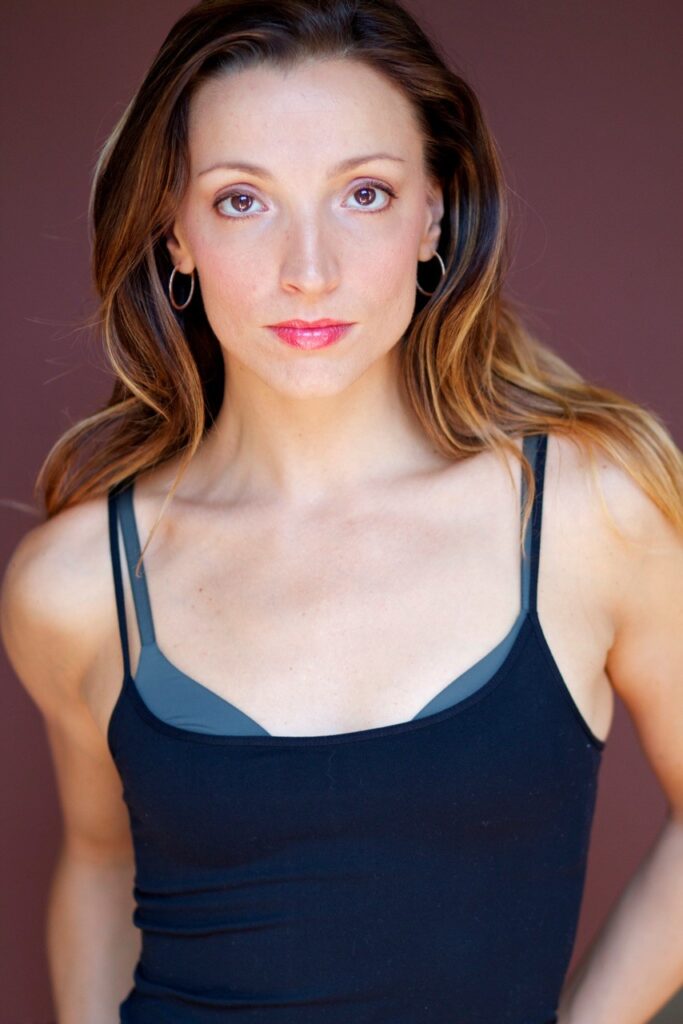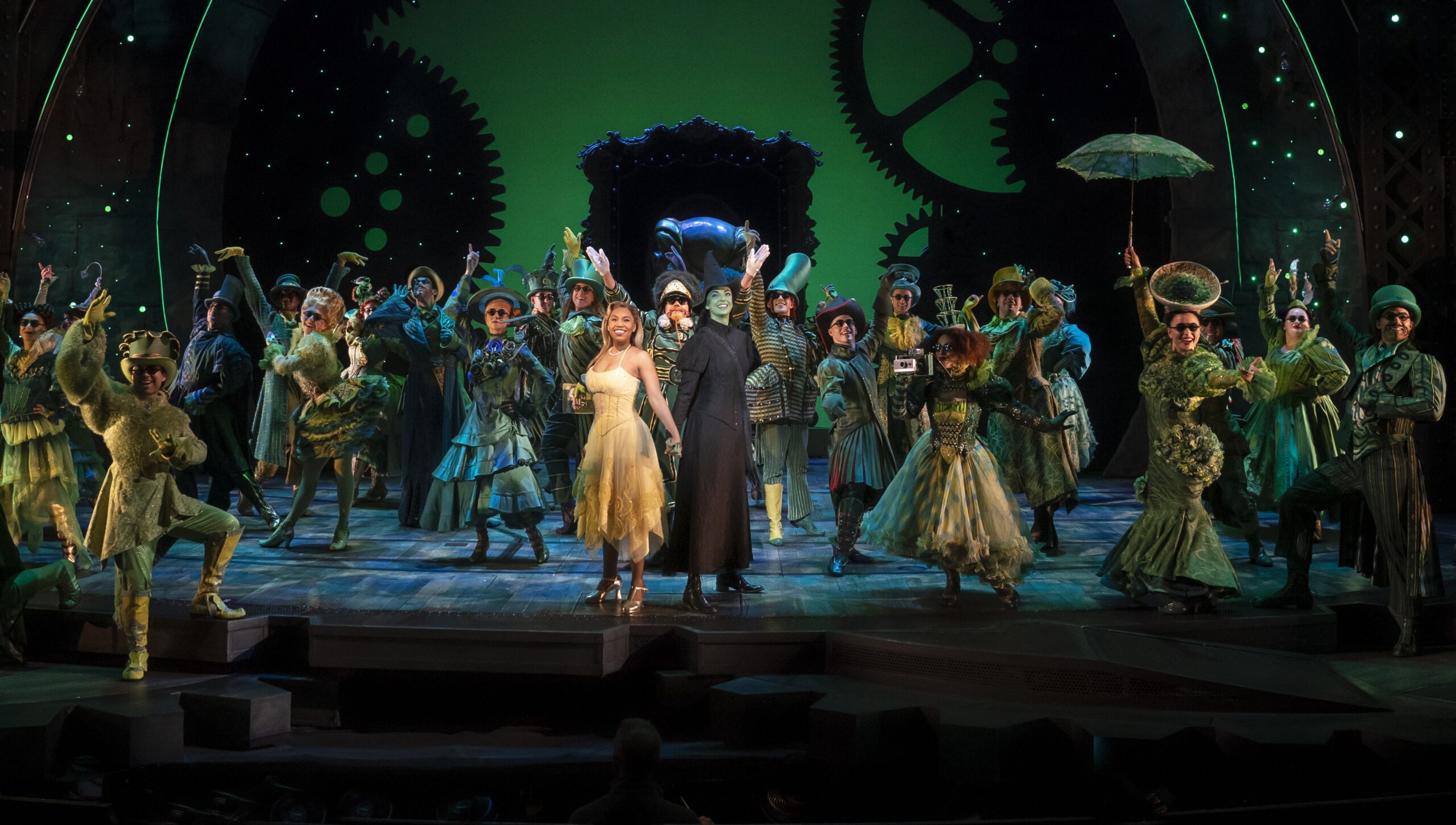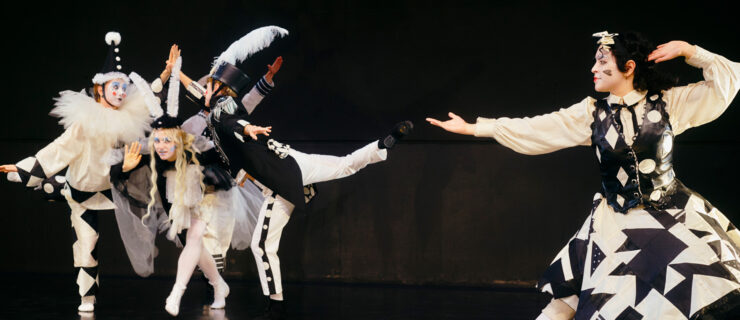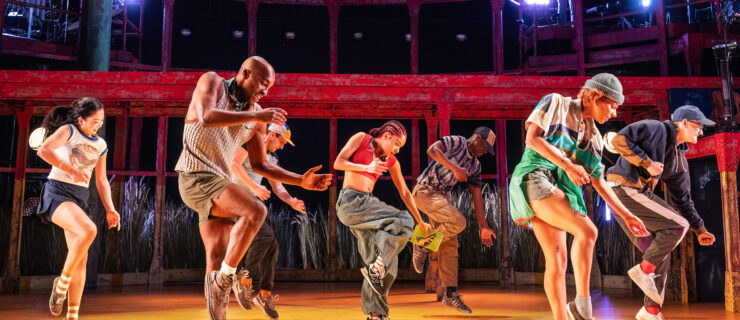How Corinne McFadden Herrera has Maintained Wicked‘s Choreography and Staging for 20 Years
Unlike lyrics or lines preserved in scores and scripts, a show’s movement is ephemeral, passed from body to body with every new cast. Ensuring that the choreography and staging stays true to the original is crucial to the integrity of a show. Such is the task of Wicked’s associate choreographer Corinne McFadden Herrera, who has been with the production from its inception in 2003.

McFadden Herrera grew up in northern New Jersey, traveling into New York City to train at Steps on Broadway and Broadway Dance Center. At 17, she booked her first job in the Radio City Christmas Spectacular, then performed with Mia Michaels’ New York City–based dance company. Meeting soon-to-be Wicked choreographer Wayne Cilento in 1999 at an audition for the Broadway production of Aida sparked a long creative partnership. Fast-forward three years and the two were collaborating on what would become the enduringly popular musical.
With a recently mounted production in Sydney, Australia, 2023 marks the 20th anniversary of Wicked’s Broadway debut. Even after all these years, McFadden Herrera says the show is never performed the same way twice.
At this point, Wicked is part of my DNA. Wayne and I had worked together in Aida and on a cruise ship show when he asked me to help with the choreography for Wicked. It was very collaborative; movement would come out of me and he would shape it. He’s a master at staging. The show’s initial success was unbelievable.
The show is a living, breathing thing, and it’s never performed the same way twice. That’s the beauty of live theater, but it’s also very difficult to maintain.
There’s a lot of choreography, but it looks deceptively simple and seamless, almost cinematic. Dancers can watch and just mimic what you’re doing physically. To attach meaning to it, so that we’re collectively telling the same story, is something else entirely.
When I teach the show, I don’t teach it in order. The opening is so difficult, it’s all individualized musical staging, and very acting-based, so you have to understand what your subtext is. I generally skip ahead and start with the stuff that moves more, like the Ozdust ballroom section, and then start adding additional layers once the dancers are acclimated to the show’s style.
We’re now two generations down the line, and some of the dancers we’re teaching the show to now weren’t even born when it first went up. Many of the dancers are so physically talented, but they’ve never had to act in this way before, so it’s very gratifying to help them grow in communicating their passion.
It’s a never-ending process. The show’s principals generally stay about a year here in the States, and then we try to turn them all over at once. But the ensemble is like a revolving door because of how the contracts work. I really feel for my dance captains sometimes, teaching track after track to get everybody in. They don’t always have time to watch the show, which is when I need to step in and make sure the company feels cohesive.
It’s always amazing to have director Joe Mantello come talk to the performers. The way he speaks about storytelling and his vision of the show, even 20 years later, always teaches Wayne and me something new. And that helps us stay fresh and on our toes.
The show is this kind of fairy-tale fantasy, but it’s rooted in real human emotion and predicament. And I think that’s why people love it so much.




